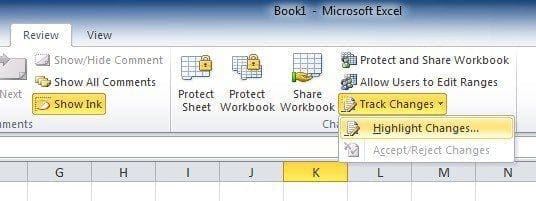

This is how you open or add a worksheet within a workbook.

Depending on your version, you instead may have a + sign a click on the + adds an additional worksheet as well. If you only have one sheet, click the “Insert Worksheet” to add a worksheet. Depending on your version of Excel, you will see either three as displayed above or just one.
#Excel 2016 review tab full#
Your workbook should already be maximized (or shown at full size) once Excel is started, as shown in Figure 1.2. Your screen may be slightly different based on the version you’re using. Take some time to familiarize yourself with this screen. Figure 1.2 shows a blank workbook after starting Excel. Excel will assign a file name to the workbook, such as Book1, Book2, Book3, and so on, depending on how many new workbooks are opened. A workbook is an Excel file that contains one or more worksheets (sometimes referred to as spreadsheets). Once Excel is started, a blank workbook will open on your screen. Click the first option “Blank Workbook”.Click Microsoft Excel to launch the Excel application and present you with workbook options.Figure 1.1 Example of an Excel Worksheet Starting Excel The worksheet data can help this retailer determine the number of salespeople needed for each month, how much inventory is needed to satisfy sales, and what types of products should be purchased. The information shown in this worksheet is top-line sales data for a hypothetical merchandise retail company. We will demonstrate how you can use Excel to make these decisions and many more throughout this text.įigure 1.1 shows a completed Excel worksheet that will be constructed in this chapter.

With respect to personal decisions, you can use Excel to determine how much money you can spend on a house, how much you can spend on car lease payments, or how much you need to save to reach your retirement goals. For example, employees can use Excel to determine how much inventory to buy for a clothing retailer, how much medication to administer to a patient, or how much money to spend to stay within a budget.
#Excel 2016 review tab professional#
The information produced in Excel can be used to make decisions in both professional and personal contexts.

These computations ultimately convert that quantitative data into information. Taking a very simple view, Excel is a tool that allows you to enter quantitative data into an electronic spreadsheet to apply one or many mathematical computations. This chapter provides an overview of the Excel application along with an orientation for accessing the commands and features of an Excel workbook. No matter which career path you choose, you will likely need to use Excel to accomplish your professional objectives, some of which may occur daily. Microsoft Excel is perhaps the most versatile and widely used of all the Office applications. Microsoft® Office contains a variety of tools that help people accomplish many personal and professional objectives.


 0 kommentar(er)
0 kommentar(er)
